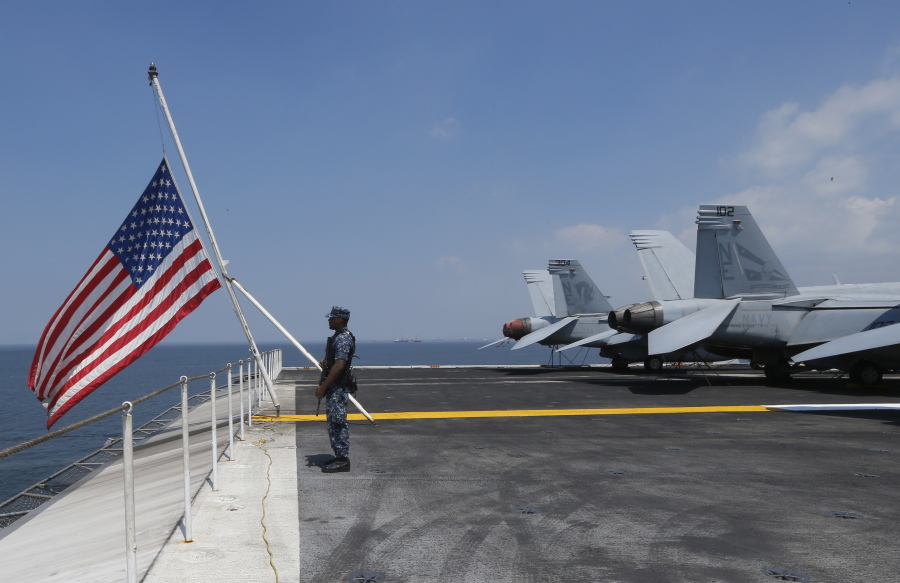ABOARD USS CARL VINSON, Philippines — U.S. forces are undeterred by China’s military buildup on man-made islands in the South China Sea and will continue patrolling the strategic, disputed waters wherever “international law allows us,” said a Navy officer aboard a mammoth U.S. aircraft carrier brimming with F-18 fighter jets.
Lt. Cmdr. Tim Hawkins told The Associated Press on board the USS Carl Vinson that the Navy has carried out routine patrols at sea and in the air in the region for 70 years to promote security and guarantee the unimpeded flow of trade that’s crucial for Asian and U.S. economies.
“International law allows us to operate here, allows us to fly here, allows us to train here, allows us to sail here, and that’s what we’re doing and we’re going to continue to do that,” Hawkins said Saturday on the flight deck of the 95,000-ton warship, which anchored at Manila Bay while on a visit to the Philippines.
When President Donald Trump came to power, Southeast Asian officials were uncertain how deep the U.S. would get involved in the overlapping territorial claims involving China and its Southeast Asian neighbors. Trump’s predecessor, Barack Obama, was a vocal critic of China’s increasingly aggressive actions, including the construction of seven man-made islands equipped with troops, hangers, radar and missile stations and three long runways.



